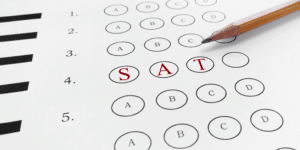If your child is being evaluated for a learning disability, you may feel overwhelmed by the new terms you have to learn and the documentation you must complete. Learn what’s covered by an IEP, how to understand its terminology, and how to ensure that your student receives the support he or she needs.
An IEP meeting — that is, a session to discuss your child’s Individualized Education Program — can seem overwhelming at first. Add to this experience the pages of paperwork required to apply for support for your child, and you may go home feeling like you have no idea what just happened.
What is an IEP?
If your child has just been diagnosed with a learning difference, this might be your first time hearing the term “IEP.” IEP stands for Individualized Education Program and refers to the legal document detailing the required accommodations for a student with special needs. Created and reviewed by a team consisting of the child’s parent(s), teacher(s), counselor(s), and administrator(s), along with outside specialists such as the child’s psychologist and/or tutor, the IEP outlines a student’s personalized educational objectives and the ideal path with which to achieve them. It is a living document, meaning that it is reviewed periodically and updated based on the child’s progression in school.
What does an IEP include?
While every district may use a slightly different format for this documentation, IEPs always contain the same information; in fact, the Individuals With Disabilities in Education Act (IDEA) guarantees that certain areas be addressed.
Identifying Information
This section includes the parent (or a guardian’s) name(s), address, phone numbers, and email address, as well as the child’s name, date of birth, student identification number, grade, and school.
Present Levels of Performance
This portion provides a description of how the child is performing in all academic, cognitive, behavioral, and physical areas. The information contained here is completed by the child’s teacher, any therapists who work with the child, and a school psychologist or independent evaluator who has met with him or her. These professionals provide their assessments based on classroom assignments, formal neuropsychological evaluations, and (when applicable) standardized test results.
Parents also contribute to this area by adding their observations of their child’s difficulties, usually based on issues they see at home.
Annual Goals
Each year, the child’s IEP team — which includes at least one parent or guardian — develop goals that the student can reasonably achieve within the year. These targets can focus on academic or other needs, including behavioral, social, or physical development. Occasionally, a child meets a goal before their next annual IEP meeting; parents can then request an amendment meeting to develop new goals.
The annual goals section should also provide a clear description of how the child’s progress will be measured, and how often it will be assessed. Common tools for evaluating growth may include formal observation by one or more members of a student’s special education support team, work samples, tests, or comprehensive portfolios.
Progress is typically measured at least once a semester; parents receive this feedback along with the student’s report card and/or narrative assessment.
Supports & Services
This section outlines the special education services that a child must receive at school; this might include speech therapy, occupational therapy, or direct intervention from a special education teacher. This portion also covers additional supports the student might require, such as an extended school year or a one-on-one paraprofessional. It will also outline any additional training that the student’s teacher may need, especially if the child has medical considerations such as a life-threatening allergy or a G-tube (a means of delivering nutrition to children who have trouble eating).
There may also be specific support products included in this section, such as pencil grips and other types of assistive technology.
Modifications & Accommodations
This section differs slightly from “Supports & Services,” and covers any supports the student may need to actually learn the curriculum. Modifications refer to changes made to classwork and homework materials, and/or expectations for those materials. For example, allowing a student to complete fewer homework problems in a particular subject, in order to modify for a student’s learning difference or disability. By contrast, accommodations are aimed at helping a child receive equitable instruction despite his or her disability or learning difference, and would include preferred seating to ensure that he or she can see the whiteboard or extra response time on class tests or quizzes.
This part of an IEP should also include considerations for modifications or accommodations that apply to state and district testing, such as being in a separate testing room or having directions read aloud.
Participation in General Education Classrooms
The IEP must include the percentage of time a student will spend in a general education class with peers, along with the percentage of time he or she will spend in a special education setting. While the school is likely to have a proposal for these figures, the parents’ input is important.
Based on the district’s policy and a child’s various levels of functioning, the student may spend all of his or her time in a general education classroom — either independently or with a one-on-one assistant — or the student may join general education students during particular programs like art or music. Similarly, if a child’s achievement is at grade level in certain subjects but not others, he or she may be in the general education classroom all day and simply receive additional support from a member of the school’s special needs team. These services can be provided individually or in small groups and may take place in the class or in a separate setting, according to the student’s needs.
Remember that nothing in the IEP is set in stone. If a child’s needs evolve throughout the year, parents can request an amendment meeting to address changes to the plan. For example, a parent may have seen growth in areas of the child’s development indicating that an inclusive classroom is better than a special education setting for that particular student. Or a parent may believe that their child needs additional support outside of his or her general education class. Parents have the legal right to meet with their child’s IEP team to discuss these issues.
Transition Service Needs
If a child is over the age of 14, his or her IEP must address the courses needed to ensure that the student can graduate from high school. Beginning at the age of 16, an IEP should also include a statement about the services (if any) that the child will need as he or she transitions out of school.
Determining post-secondary goals — that is, those that follow high school — depends largely on a child’s functioning. Plans may include going to college, a trade school, or getting a job. Alternatively, it may be important to teach the skills needed to function independently outside of the home, or to attain living skills such as making meals and keeping a home in order. Post-secondary goals are usually developed in collaboration with the student, and each subsequent year’s IEP goals are created with these aims in mind. As with other stages of a child’s development, parents can request changes according to his or her growth.
It’s important to note that some special needs students remain in the K–12 school system and continue to receive services until they reach the age of 21. That said, some colleges and universities are beginning to provide post-secondary programs for people with disabilities. Whichever path a child pursues, he or she is eligible to receive support services until this age — either through their school or district office.
Signature Page
Everyone who attends an IEP meeting should sign this page. There will be one area for parents to sign that confirms their attendance, as well as another field where parents sign to agree to what was covered in the IEP. That said, parents are not required to provide their consent at the meeting; they can take home a draft to review before returning the signed form.




